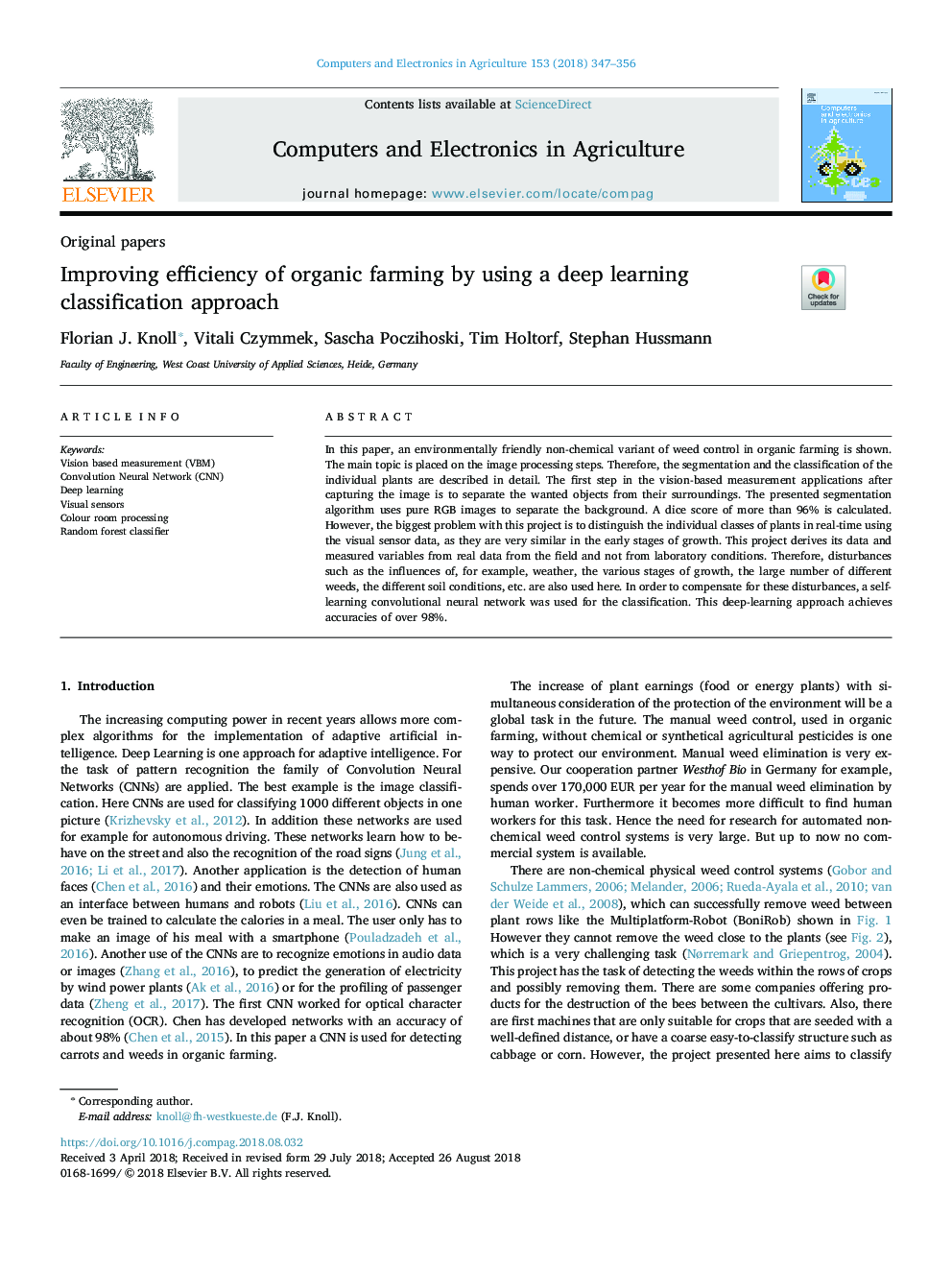| Article ID | Journal | Published Year | Pages | File Type |
|---|---|---|---|---|
| 11000017 | Computers and Electronics in Agriculture | 2018 | 10 Pages |
Abstract
In this paper, an environmentally friendly non-chemical variant of weed control in organic farming is shown. The main topic is placed on the image processing steps. Therefore, the segmentation and the classification of the individual plants are described in detail. The first step in the vision-based measurement applications after capturing the image is to separate the wanted objects from their surroundings. The presented segmentation algorithm uses pure RGB images to separate the background. A dice score of more than 96% is calculated. However, the biggest problem with this project is to distinguish the individual classes of plants in real-time using the visual sensor data, as they are very similar in the early stages of growth. This project derives its data and measured variables from real data from the field and not from laboratory conditions. Therefore, disturbances such as the influences of, for example, weather, the various stages of growth, the large number of different weeds, the different soil conditions, etc. are also used here. In order to compensate for these disturbances, a self-learning convolutional neural network was used for the classification. This deep-learning approach achieves accuracies of over 98%.
Related Topics
Physical Sciences and Engineering
Computer Science
Computer Science Applications
Authors
Florian J. Knoll, Vitali Czymmek, Sascha Poczihoski, Tim Holtorf, Stephan Hussmann,
